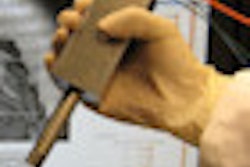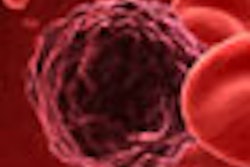
Clinicians should rely on oral exams, specialty referrals, and tissue biopsies to best diagnose premalignant and malignant oral lesions because there isn't enough data to prove that adjunctive cancer detection devices are effective in a general practice setting, according to a recent study in the Journal of the American Dental Association (JADA, July 2008, Vol. 138:7, pp. 896-905).
There is an ongoing debate in the dental community about the utility of these devices in the early detection of oral cancer. But the manufacturers of these products stand by them and contend that the JADA study is too limited in its scope.
In the JADA literature review, the authors searched for articles on PubMed, ISI Web of Science, and the Cochrane Library from January 1966 through February 2008 that evaluated the effectiveness of toluidine blue (TB), ViziLite Plus with TBlue, ViziLite, Microlux DL, Orascoptic DK, VELscope, and the OralCDx brush biopsy. Ultimately, they short-listed 23 studies that met their criteria.
In particular, they included studies that reported histologic confirmation of lesions identified by adjunctive techniques, or those that allowed calculation of the test's accuracy compared with tissue biopsy.
The researchers looked at study design, sampling, and characteristics of the study group; interventions and reported lesion diagnostic outcomes; information about the clinical setting (mucosal disease or cancer center clinic or a general practice); and subjects' presumed oral cancer risk.
"We gave each article a summary quality score by means of assessing a priori identified important attributes of the study that may have led to bias in interpretation of results," the authors wrote.
ViziLite Plus with TBlue
The authors looked at three studies that examined ViziLite and reported that its sensitivity was consistently at 100%. However, the authors noted, all three studies involved patients with previously visualized mucosal lesions. The specificity ranged from 0% to 14%. The positive predictive value (PPV) was 18% to 80%, and the negative predictive value (NPV) ranged from 0% to 100%.
No longer available as a standalone device, ViziLite is only available as a kit with blue phenothiazine dye (TBlue). Two studies assessed ViziLite Plus with TBlue.
"The investigators found that ViziLite enhanced visual lesion characteristics in approximately 60% of lesions, identified all lesions previously identified with standard light and identified no additional lesions," the authors wrote. "The addition of TB application to the chemiluminescence enhanced visual examination ... improved the specificity and PPV and increased the NPV to 100%."
Zila Pharmaceuticals, the company that manufactures and markets ViziLite, took exception to some of the study's findings, however. ViziLite's efficacy in identifying suspicious lesions that are missed during visual examination was not accurately reported in the article because the authors used only manuscripts reporting previously identified visual lesions, Mark Bride, D.D.S., Zila's vice president of medical and clinical affairs, told DrBicuspid.
"The ViziLite studies eliminated from consideration were conducted by mucosal disease specialists and thus, per their [the authors] criteria, considered lower quality studies," he noted. "This makes little sense in that the outcomes of those studies demonstrated an improvement in the net yield of lesions suspicious for precancer or cancer with the inclusion of chemiluminescent examination. The article determined that these results are not translatable to a general practitioner in a general screening population. This conclusion is disconcerting and should have no bearing on determining study quality."
Dr. Bride also pointed out that, since Zila's only product is ViziLite Plus with TBlue, reporting on the performance of individual components does not accurately represent the product.
"Unfortunately, by eliminating pertinent studies from the analysis for the purpose of comparing device outcomes to histologic (biopsy) outcomes, ViziLite Plus with TBlue was positioned as a diagnostic tool instead of a screening adjunct," he added.
VELscope
VELscope manufacturer LED Dental also said the study selection does not accurately represent its product.
The JADA study authors looked at two studies that assessed the VELscope. Both involved patients with known oral dysplasia or squamous cell carcinoma (SCCa) confirmed by biopsy.
"Compared with the sensitivity of histopathological examination in patients with identified high-grade dysplastic lesions and SCCa, the reported sensitivities of tissue autofluorescence with the VELscope technology as an adjunct to visual examination were 98% and 100%; specificity was 100% and 78%; PPVs were 100% and 66%; and NPVs were 86% and 100%, respectively," the authors wrote.
The VELscope is useful in assessing lesion margins in patients with oral premalignant and malignant lesions, the authors noted. No studies have been published on its effectiveness as a diagnostic adjunct in lower-risk populations or in patients seen by primary care providers.
"I believe it is a good exercise to see how the various oral cancer screening methods and technologies 'stack up' against this type of rigorous criteria," stated David Morgan, Ph.D., LED Dental's chief science officer, in an e-mail to DrBicuspid. "The bottom line is that none of them compare very well against this type of standard -- and this includes the conventional oral examination itself. Even biopsy with histopathological examination, the gold standard for diagnosis, has significant issues -- sampling problems and subjective rather than objective assessment criteria, which lead to less than ideal inter- and even intrapathologist variability."
Holding newer adjunctive techniques to this kind of standard -- prospective, randomized, controlled, community based multisite studies conducted by nonexpert clinicians on a general, low-risk population -- and recommending that clinicians not to use them because they don't measure up to this standard yet is misguided, he added. The VELscope is not a standalone diagnostic test, he stated.
"It is peculiar that there is concern about using technologies which, when used properly in combination with a conventional exam, help you see more things better, things you might have missed, sometimes things that might save somebody's life," Morgan noted.
OralCDx brush biopsy
The JADA study authors also looked at four studies involving the use of the OralCDx brush biopsy in detecting or diagnosing oral premalignant and malignant lesions. They concluded that, while the test has utility in detecting dysplastic changes in mucosal lesions, there is insufficient data to assess its utility in low-risk populations or clinically innocuous lesions.
Drore Eisen, M.D., D.D.S., medical director of OralCDx Laboratories, said that this finding is "clinically pointless."
"Using the same inclusion criteria that the authors applied to studies of OralCDx, the sensitivity of the scalpel biopsy for testing those nonsuspicious lesions, which are not subjected to scalpel biopsy, is certainly unknown," he said. "For the practicing general dentist, how suspicious an oral lesion may appear matters little, since all white and red tissue changes without a known cause require testing regardless of how suspicious they may appear, and OralCDx offers dentists the only noninvasive and accurate method of testing them."
The study authors stated that, based on the literature, the sensitivity of the OralCDx test varied from 71% to 100%, specificity varied from 27% to 94%, PPV ranged from 38% to 88%, and NPV ranged from 60% to 100%.
But in every comparative study in which the OralCDx brush and scalpel biopsy of a lesion are performed simultaneously and on the same tissue, a very high degree of agreement between these two biopsy techniques is always confirmed, Dr. Eisen said.
"In a recent study of 200 patients with oral leukoplakia, two scalpel biopsies taken of the same lesion agreed with each other only 56% of the time, and underdiagnosis from scalpel biopsy was noted in 29.5% of patients," he said. "Therefore, those studies quoted in the JADA paper, which reported some discrepancies between brush biopsy and scalpel biopsy results, are completely meaningless since in all of those studies the two biopsy samples were obtained by two different examiners and at widely different times."
The authors did not find any studies that met their criteria for the Microlux DL and Orascoptic DK systems.
The authors did not respond to repeated attempts to give them the opportunity to respond to the vendors' comments here.



















